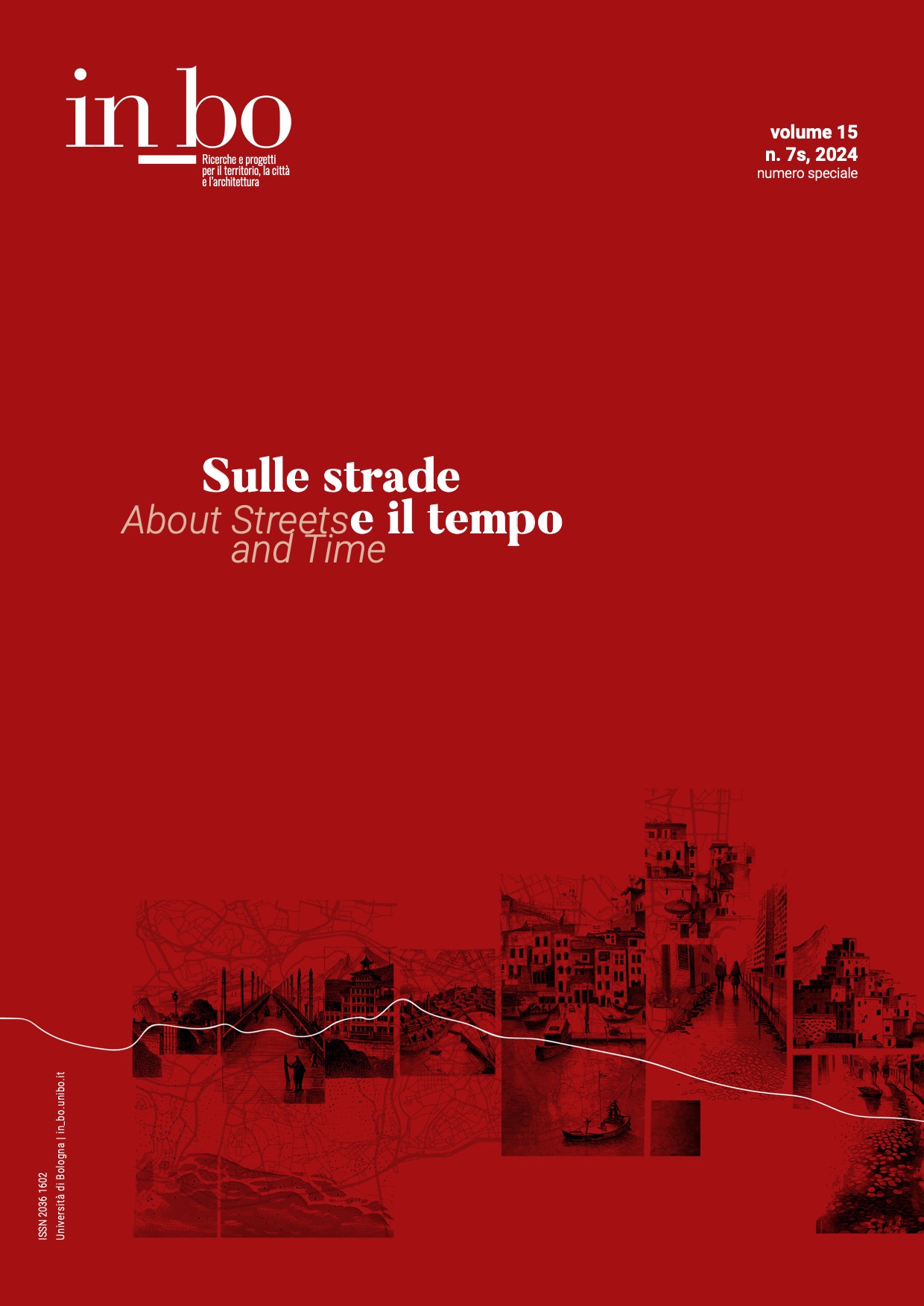Street Imagery in the Work of Team 10: Detecting the Everyday
DOI:
https://doi.org/10.6092/issn.2036-1602/20410Keywords:
collective imaginary, everyday, neighbourhood, thinking tools, in-betweenAbstract
The paper presents an initial investigation of the different roles played by images of human beings inhabiting the street in the iconographic work of Alison and Peter Smithson, Aldo van Eyck and Herman Hertzberger.
At first, it analyses these documents on the basis of a shift of focus from the built objects to the relations of these latter with their users. The street is thus recognized not only as a space relegated to circulation but as an actual living place shaped by communities’ association and reidentification processes.
After that, this street imaginary is analyzed in its multifaceted roles. The images are thus regarded as innovative tools to detect the everyday life of neighbourhood communities, as artifacts capable of conveying timeless portraits of spontaneous ways of inhabiting the urban space, and as powerful rhetorical devices in a broader context, notably in the post-war reconstruction.
Within contemporary architectural discourse and practice, the street still plays a central role in answering human psychological and emotional needs of association and identity and as a stage of political and cultural struggles. Therefore, the paper aims to problematize the different meanings that its multiple representations assumed in the post-war period, in turn, to reinforce collective memory, convey a particular reassuring image of community, document actual uses of public space, or justify urban design interventions.
Downloads
Published
How to Cite
Issue
Section
License
Copyright (c) 2024 Elena Giaccone

This work is licensed under a Creative Commons Attribution-NonCommercial 4.0 International License.





